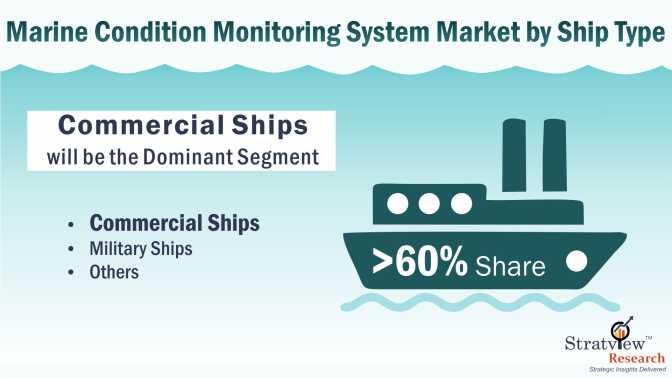The maritime industry plays a crucial role in global trade and transportation, with ships serving as the backbone of international commerce. As technology continues to advance, the need for efficient and reliable marine condition monitoring systems becomes increasingly important. These systems enable ship operators to monitor the health and performance of various onboard components, ensuring the safe and efficient operation of vessels. The Marine Condition Monitoring System Market is likely to drive the demand at a modest rate of 3.4% over the next five years, helping the market stakeholders to cross a landmark figure of US$ 700 million by 2027.
Marine condition monitoring systems are designed to detect and diagnose potential issues in critical equipment and machinery on ships, such as engines, propulsion systems, electrical systems, and auxiliary equipment. By continuously monitoring parameters like vibration, temperature, pressure, and fluid levels, these systems can identify abnormalities and provide early warnings, allowing for timely maintenance and reducing the risk of costly breakdowns and accidents at sea.
In recent years, technological advancements have revolutionized marine condition monitoring systems, offering enhanced capabilities and features. One significant development is the integration of Internet of Things (IoT) technology, enabling real-time data collection and analysis. IoT-enabled sensors and devices can be strategically placed throughout a vessel to monitor multiple components simultaneously. The collected data is then transmitted to a centralized system or cloud-based platform for analysis, enabling remote monitoring and diagnostics.
Furthermore, the application of artificial intelligence (AI) and machine learning algorithms has greatly improved the effectiveness of marine condition monitoring systems. These algorithms can analyze vast amounts of sensor data, identify patterns, and predict equipment failures with a high degree of accuracy. By leveraging AI and machine learning, ship operators can implement predictive maintenance strategies, allowing for proactive repairs and minimizing downtime.
Advancements in sensor technology have also contributed to the evolution of marine condition monitoring systems. Sensors have become more compact, durable, and capable of measuring a wider range of parameters. For example, wireless vibration sensors can now be attached to rotating machinery, providing real-time feedback on the health and performance of critical components. Similarly, temperature and pressure sensors have become more precise and reliable, enabling accurate monitoring of engine and system conditions.
The market for marine condition monitoring systems has witnessed significant growth in recent years and is expected to continue expanding. The increasing demand for operational efficiency, safety, and environmental compliance in the maritime industry is driving the adoption of these advanced systems. Shipowners and operators are recognizing the long-term cost savings and benefits of implementing condition monitoring solutions, such as reduced maintenance costs, optimized performance, and extended equipment lifespan.
Moreover, regulatory bodies and classification societies are imposing stricter guidelines and standards for maritime safety and environmental protection. Compliance with these regulations necessitates the use of robust condition monitoring systems to ensure the continuous operation of critical equipment and reduce the risk of accidents or environmental incidents. This regulatory push further propels the market growth for marine condition monitoring systems.
In terms of geographical distribution, North America and Europe currently dominate the market due to their significant maritime activities and established shipping industries. However, emerging economies in Asia-Pacific, such as China and South Korea, are witnessing rapid growth in the shipbuilding and marine transportation sectors, creating ample opportunities for condition monitoring system providers in the region.
In conclusion, advancements in marine condition monitoring systems have revolutionized the way ships are operated and maintained. The integration of IoT, AI, and machine learning technologies, coupled with improved sensor capabilities, has enhanced the effectiveness and efficiency of these systems. As the maritime industry continues to evolve, the demand for reliable and advanced condition monitoring solutions will grow, offering significant opportunities for technology providers in this market.



